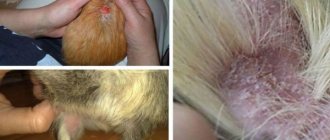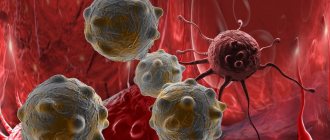If your hamster has fleas, you need to act very carefully. The health of a rodent depends on the correctness of its actions and the chosen treatment methods. Neglect can result in the death of a pet or unpleasant consequences for a person.
To paraphrase a well-known saying, we can say that the person who tamed the animal is responsible for its future fate. Firstly, a small hamster is not a funny “toy”, but a living creature with its own “problems”. The animal may become sick and become infected with parasites. The owner will have to save the animal.
Can a hamster have fleas?
When asked whether hamsters have fleas, you need to look for the answer before the animal enters the house. The decision to have a pet should be a conscious one, so you should initially become familiar with the peculiarities of keeping animals in the house and possible diseases of the rodent. Yes, hamsters have fleas!
The animal's body is covered with fur, and the skin is easily bitten by parasites. Contrary to popular belief, fleas do not live directly on the body of animals, but regularly feed there. For parasites, it does not matter whose blood they drink: a cat, a dog, a mouse or a hamster.
Fluffy Syrian, Royal and Angora hamsters are most susceptible to pest attacks. Animals of the Dzhungar and Roborov breeds suffer less from this scourge.
Preventive measures
In order to prevent the spread of fleas in a private household or apartment, the tenant performs the following actions:
- regularly examines the hamster for the presence of bloodsuckers in its fur;
- uses specific plants that smell strongly (for example, wormwood). Then the household member lays out this grass near the cage. The fragrant smell of wormwood does not affect the hamster in any way, but fleas are afraid of it and quickly run away from there;
- cleans and treats the hamster cage with special insecticidal agents;
- before adding a second rodent of the same type to the hamster, the tenant treats it with an anti-flea drug;
- When walking a hamster outdoors, pre-treat it with anti-flea drops or another insecticide to prevent the rodent from becoming infected with fleas.
Thus, by following the simple recommendations listed above, the hamster owner prevents the occurrence of fleas in such a rodent and thereby protects himself and the animal from unpleasant “surprises”.
Routes of infection
Fleas on a hamster are not a natural phenomenon. This animal is not their permanent “master”. However, under certain conditions they can tire the animal for a long time.
Main sources of infection:
- Other pets and parasites. Cats, dogs, as well as rats and mice are brought into the house. Infection occurs during mating if one of the participants in the process is a temporary host.
- Stay at the pet store. There are situations when a pet is brought into a home already infected. Symptoms are not visible at first, but appear over time.
- Street grass. Rodents are offered green grass that grows outside as food. Eggs and insects themselves are found in sand, soil and thickets. Therefore, the person himself brings the infection into the house.
The likelihood of infection is low, if there are no other pets in the house, feed the animal with special food and prevent the presence of street rodents.
Why are parasites dangerous?
Fleas make your hamster uncomfortable. The moment of the bite itself is very painful, and after it itching occurs. Because of this, the rodent is constantly itching. Unpleasant sensations prevent him from sleeping. As a result, the animal becomes irritable or even aggressive.
However, fleas on hamsters are dangerous for other reasons:
- tissue swelling and inflammation occurs at the site of the bite;
- an abscess may develop on the skin due to infection entering the wound;
- the hamster is at risk of developing an allergic reaction;
- there is a possibility of infection with helminthiases, which are carried by fleas.
Attention! Blood-sucking parasites are also dangerous for humans. Arthropods carry infectious diseases such as plague, typhus and salmonellosis.
Symptoms of flea infestation
The presence of parasites can be recognized by their characteristic signs. Fleas cause discomfort and pain to your hamster. The behavior and appearance of the animal changes. He becomes restless, sleeps poorly, loses his appetite, often itches and chews his fur.
The examination reveals:
- blisters and bite marks on the body;
- encrusted blood stains;
- sand-like grains;
- receding hairline;
- combs.
If the owner leaves the pet without proper attention, infection penetrates into the wounds, inflammation begins, and purulent formations appear.
The first signs of fleas on a hamster's fur
At the moment, the appearance of various types of fleas in a hamster is indicated by specific signs that become noticeable upon closer examination of the rodent.
Thus, when such bloodsuckers settle on this animal, its owner observes the following symptoms:
- the hamster's skin becomes covered with small wounds that arise due to this pet scratching the area of flea bites;
- bald patches appear on the rodent;
- dandruff forms under the hamster's fur - a peculiar reaction of the body to the presence of bloodsuckers;
- the hamster itches intensely and for a long time, and also causes severe pain to itself.
Also, the owner of a hamster determines the presence of fleas on him in this way - he slightly pushes the rodent’s fur apart with his fingers. If very small black parasites are visible underneath, then this is a flea infestation in your pet.
Thus, if the above symptoms occur, you should immediately begin treating your hamster. Moreover, it is better to first visit a veterinarian, who will make an accurate diagnosis and then prescribe the correct, highly effective treatment.
The danger of parasites for hamsters and humans
Severe infection leads to death in a short time. Parasites irritate with their bite, drink blood, exhaust and weaken the animal. In addition, the presence of insects on a pet’s body is dangerous for the development of other serious diseases.
- Fleas are carriers of helminth eggs. At the moment when the rodent tries to remove the leech with its teeth, the worm eggs enter the hamster's body. The first symptoms of infection may appear after 14 days.
- Infection occurs in open wounds and scratches. Dermatitis, eczema, and abscesses appear on the body. In addition, insects spread plague, salmonellosis, and typhus.
- The flea animal loses sleep, appetite and strength. Nervous and physical exhaustion leads to death.
Insects are not that dangerous to humans. Fleas do not specifically attack people; they attack when a room is heavily infested.
What is the danger
If you imagine that a flea got into the house from the street, then unpleasant facts emerge.
She managed to bite several stray animals and people, and then “moved” to a new place of residence. It is difficult to predict what diseases a hamster may get after being bitten by a pest. The flea is a carrier of plague. The virus has not been destroyed and is still walking around the world. But the chance of a hamster contracting plague or typhoid is extremely small. However, there is another set of diseases that will become dangerous for the pet’s body.
Worms
The hamster tries to get rid of the bloodsucker by biting it out of its fur. Dandruff and flea excrement enter the esophagus, and the animal becomes infected with helminths. The consequences of their parasitism are known to every person.
Infection
The animal injures itself. Claw wounds can become infected and fester. Neglected skin problems result in abscesses for the hamster. Inflammations become an attractive target for the proliferation of dangerous bacteria and viruses.
Stress
The animal cannot sleep and eat peacefully because of fleas. They constantly bite him, and the hamster throws all his energy into trying to destroy them. The pet weakens, loses weight, becomes nervous and aggressive. A neglected stress condition will lead to the death of the pet
Therefore, it is important to remove fleas as quickly as possible and treat the premises
Do not use medications for cats and dogs
Rodent treatment
After you have discovered fleas on your hamster, it is worth asking the pressing question of how the infection occurred. Timely treatment ensures a quick recovery for the pet and a restful sleep for the owner.
What you should not do is bathe your hamster with flea shampoo for cats and dogs. Animals do not tolerate water procedures well and risk dying from a cold. It is recommended to use special products at home or seek help from a veterinarian.
Flea drops
They are considered the most effective and convenient to use. To fully treat the animal, you need to apply 1-3 drops of the product to the withers, where the hamster cannot reach the teeth.
Within 2 hours, the active components are completely absorbed by the skin, localized in the hair follicles and in the upper layer of the epidermis. The poison enters the body of insects through bites.
The effect of the drug lasts from 1 to 3 months. Drops are used to treat and prevent re-infection.
For the treatment of rodents, it is recommended to choose safe agents whose active components do not enter the systemic bloodstream. These include, for example, drops for treating cats.
A product for dogs is also produced under this brand, but the dosage is higher, so it is not suitable in this case. If your hamster has fleas and you don't know what to do, buy a few drops for cats and apply them once.
Injections
This treatment method is suitable when the animal is heavily infected and the likelihood of reinfection is high. The veterinarian knows very well how to remove fleas from a hamster with an injection, so there would be no shame in using his services.
The product used can cause serious side effects, including death, so the rodent should be tested the first time. Typically, ivermectin 1% is used twice at 15-day intervals.
Insecticidal powder
The product in powder form is applied to the animal’s body and gently rubbed into the skin. The active components begin to act immediately. Insecticides paralyze insects on contact, after which they die.
The action lasts about 2 weeks. If necessary, repeat the course of treatment. For the treatment of domestic hamsters, veterinarians prescribe Insectal and Celandine.
Anti-parasite sprays
The drug is produced in finished form in a special aerosol can. To remove fleas from a hamster, it is enough to treat your pet's fur once.
The spray gun should be kept at a distance of 5 cm from the surface to be treated. The product dries quickly, but preferably 20 minutes after treatment, make sure that the pet does not lick the spray from the fur.
It is recommended to use a special Ultra Care spray for rodents, a flea and tick spray for small animals, or a product for cats, such as bars.
Prevention
To avoid the appearance of new animals in your pet, you need to keep its home clean. It is enough to change the sawdust twice a week and carry out wet cleaning once every 7 days. Fleas can also appear on sawdust brought from a pet store, so many owners put them in the oven for a few minutes. Thus, under the influence of high temperature, all bacteria and parasites die.
Hamster in a cage
If your hamster already had fleas, then for prevention purposes we treat your pet’s fur with a special product once a month, for example Frontline drops. They can be found in pet stores or specialized animal clinics.
Another way to leave fresh wormwood near the cage, its smell will scare away all unwanted guests. This effect does not last long; after 3-5 days it should be replaced with new grass.
In the wild, hamsters are plagued by various parasites, but in the home environment they are extremely rare. The most important thing is to notice in time, sound the alarm and take the necessary measures to get rid of fleas.
Great article 29
Cell processing
Adult insects jump onto the animal's body for the purpose of feeding; they are rarely found there all the time. The eggs are scattered throughout the house, and the larvae often develop in the litter tray, the hamster's cage. To destroy parasites, it is necessary to clean the “house” and disinfest the cage.
Remove food debris, clean bowls, drinking bowls. Toys are washed with soap. The bed is washed and then steamed. The cage is treated with an insecticidal spray. Any product will do, including Dichlorvos. They do this in the fresh air and after 3 hours you can throw the animal there.
How to detect the presence of parasites
Very often, hamster owners notice the appearance of blood-sucking parasites only when the pet’s life becomes completely unbearable. The reason for this is the animal’s excessive activity. Rodents themselves are very clean, and pay enough attention to hygiene, constantly licking and combing their fur coat. Therefore, regular examinations of your pet should be carried out, which will help identify parasites as early as possible. There are several main signs that unmistakably indicate a problem.
Active behavior
When parasites appear, the pet’s usual calm existence is replaced by sleepless nights and inappropriate behavior.
The skin reaction to bites is various forms of itching, which provoke the following characteristic actions:
- restless movement around the cage during the day and night;
- scratching the skin in certain places;
- attempts to bite parasites out of wool.
Skin problems
Very often, the appearance of parasites can go unnoticed for a long time. Frequent scratching leads to inflammation of the skin.
Clear signs of the appearance of fleas and a signal to take urgent action may include:
- bald patches on certain areas of the body;
- the appearance of dandruff, which was not previously observed;
- growths and crusts on the surface of the skin.
Detection of parasites or their feces
In order to detect “uninvited guests”, you should examine the fluffy very carefully. The most favorite places for fleas on a rodent's body are the stomach and the area behind the ears. As soon as you part the fur, you will see insects. If there are fleas on the animal's skin, you can find small red spots that cause irritation and scabies.
Did you know? If a person of average build and height had the same jumping ability as a flea, he could make a high jump of 140 m and 270 m in length.
If the rodent is a carrier of a small number of parasites and the fleas themselves are not visible, then the presence of small black lumps on the hamster’s fur can be considered a sign of their vital activity. This dark “sand” on the animal’s skin is the feces of blood-sucking parasites. Insect nests can also be observed.
Treating all pets and your home for fleas
Since the rodent cage is indoors and flea eggs may be scattered everywhere, it is recommended that all pets be washed and treated.
In case of severe infection, it is recommended to disinfest the premises; in other cases, folk remedies are used.
- Sprinkle carpets with boric acid powder and vacuum every other day.
- Wash floors with water and vinegar or ammonia. For 1 liter of water, one tablespoon of product.
- Clean the walls with a solution at a height of 1 m above the floor level.
- Pour boric acid into the cracks.
Be sure to treat the room, otherwise you will have to constantly fight pests.
Gastrointestinal diseases
There are various diseases of hamsters that are caused by pathogenic microorganisms. Among them, veterinarians identify pathologies of the digestive tract. They cause gastrointestinal disorders, and in severe cases can lead to the death of the animal.
Worms are also common in hamsters, which enter the body along with contaminated food or water. The disease can be determined by the slow growth of young animals, sudden weight loss (with normal nutrition), problems with fur (for example, oily sheen)
It is also worth paying attention to the consistency of the stool: it becomes soft, the mass contains blood, mucus or fragments of parasites
Colibacillosis
This disease in hamsters is caused by E. coli. Colibacillosis is also called “wet tail”. This is because loose stools cause the fur around the hamster's anus to be wet.
The disease occurs as a result of the penetration of E. coli into the body. The source of infection is contaminated food or water.
You can tell that your hamster has colibacillosis by the following symptoms:
- watery diarrhea with a pungent odor;
- decrease or disappearance of appetite;
- weight loss;
- anxiety;
- depression, lethargy, apathetic state;
- exhaustion of the body;
- sometimes high temperature;
- uncertain movements;
- increased heart rate and breathing.
Specific signs of colibacellosis are loose stools and wet fur around the anus. The hamster is constantly trying to find a secluded place and curl up into a ball. He looks sloppy, his fur is disheveled, his ears are flattened, he doesn't move much.
The disease develops quickly, so treatment must be started in the early stages. Therapy is carried out under the supervision of the attending physician. The infection should be treated with electrolyte solutions and antibiotics (tetracyclines are often used). The former improve the hydration process, while the latter destroy bacteria in the intestines.
Therapy is carried out at home. During the treatment period, you must follow the diet prescribed by the ratologist.
Escherichia coli
Hamster diseases caused by E. coli can lead to the death of the pet. The infection begins to develop after a pathogenic microorganism enters the animal’s body, which begins to multiply rapidly. Because of this, the natural intestinal microflora changes, and the hamster’s condition deteriorates sharply.
Signs of an illness caused by E. coli:
- high body temperature;
- diarrhea with blood streaks;
- weakness, apathy;
- the animal does not eat anything;
- weight loss;
- blanching of the mucous membranes.
The infection progresses quickly and often ends in the death of the animal. To prevent this from happening, when the first symptoms of the disease appear, you need to contact a ratologist. The doctor will prescribe a bacteriological analysis to identify the pathogen and develop treatment tactics. Intestinal antiseptics and antibiotics will help destroy the source of infection.
You can get E. coli from a sick hamster. To avoid this, a person should thoroughly wash their hands with soap after contact with the animal. To prevent illness, you should keep your home clean.
Enteritis
This is a disease in which the inflammatory process affects the small intestine (some parts or all of it). As a result, its functionality is impaired, and dystrophic changes appear on the mucous membrane. Then various digestive disorders arise.
The main reason for the development of enteritis in a hamster is considered to be the lack of hay in its diet. The disease is manifested by increased gas formation in the intestines and diarrhea.
Enteritis is treated by introducing high quality hay into the hamster's diet. Specific therapy is also carried out: the feces of a healthy animal are diluted with water, and then administered through an enema into the patient’s intestines.
What not to do
Do not get your hamster's fur wet. The animal will try to dry itself and dangerous particles from its coat will fall into the esophagus. The result is the development of helminths.
Do not use drops on the withers or anti-flea shampoos for cats and dogs. The products are dangerous for the small body and skin. There is no drop on the withers for rodents.
Do not buy medications yourself after reading reviews or descriptions on the Internet. Products are recommended only by a veterinarian.
How to get them out
You can get rid of fleas on your hamster using any insecticide available at the pet store. Among them there are products specifically designed for hamsters - their concentration will not harm the baby, but will destroy fleas.
Among the most popular means are the following:
- Insecticidal powder;
- Spray against fleas and other insects;
- Drops on the withers (may contain both insecticidal and acaricidal substances that kill the more common hamster parasites - mites).
Good to know! Brands such as Frontline and Stronghold produce special long-acting therapeutic and prophylactic preparations for rodents, intended for application along the spine.
Shampoos are not used for hamsters, as they cannot be wetted. Recently, treats for hamsters have appeared that contain anti-flea agents, but not all of them are equally willing to eat them.
Hamster and pills
Important! If you are not sure you know how to treat your hamster, consult your veterinarian.
When starting to remove fleas, you need to take into account that their eggs and larvae do not live on their hosts. For many millennia, the flea has chosen burrowing animals for its life, since its eggs are unable to stay on the fur of animals; they are dropped onto the litter in a burrow or nest, where larvae emerge from them and feed on dead organic matter (scales of skin, dirt, sweat and excrement of adult insects ). Having moulted, they turn into adults and only then begin to hunt animals for blood.
So, to be sure that we got rid of fleas, we need to change the bedding in the cage to fresh one, and wash the cage itself with hot water and washing powder or laundry soap.
What can hamsters get sick with?
The most common diseases include the following:
- dental growth abnormalities;
- inflammation of the cheek pouches;
- herpes;
- trichomoniasis.
Tooth growth abnormalities
Dental disease is associated with the constant growth of the front teeth (incisors). When they grow too much, the bite is disrupted and the jaws do not close. Too long incisors scratch the oral mucosa, which causes pain. This is often caused by a lack of solid food in the rodent's menu. In this case, the animal does not have time to grind down its incisors.
Dental diseases lead to an inflammatory process. Abscesses and abscesses often form on the affected area.
Dental diseases in hamsters are manifested by the following symptoms:
- redness of the mucous membranes of the mouth;
- hypersalivation (increased salivation);
- refusal of food;
- weight loss;
- deformation of the front teeth;
- damage to the inside of the cheeks.
As the incisors grow, the hamster chatters its teeth, begins to gnaw at the bars of the cage, and may even bite the owner. He becomes restless due to discomfort and pain.
Inflammation of the cheek pouches
This is one of the most common diseases, which is characterized by inflammation, eversion or prolapse of the cheek pouches. Pathology can lead to the appearance of tumors on the inside of the cheek.
The cheek pouches become inflamed when they are damaged by a sharp object. The likelihood of an inflammatory process increases when they are constantly filled with food (especially roughage).
Then the sick hamster behaves restlessly, refuses food, and drools increased. The animal rubs its cheeks with its paws because of the painful sensations. Sometimes there are no clinical signs of this disease.
To cure your hamster, you need to go to a veterinary clinic.
To get rid of inflammation, you need to clean the bags of food debris. After this, the oral cavity is washed with an antiseptic, which will stop the development of pathogenic bacteria and also accelerate their death. Probiotics and enzyme-based medications prescribed by your doctor will help normalize digestion.
Herpes
Herpetic infection in hamsters is common. The disease is usually asymptomatic. An animal can become infected from sick animals with which it has been in contact.
In most cases, the disease goes away on its own within 5–10 days. The hamster does not require treatment. But a person needs to see a therapist who will prescribe immunomodulators to increase the body’s protective properties.
Trichomoniasis
This disease is caused by the parasite Trichomonas gallinae. They enter the hamster's body, where they begin to reproduce by fission.
The causes of infection are consumption of contaminated water or feed.
Symptoms of this parasitic disease in hamsters are:
- the pharynx becomes covered with a yellowish coating;
- throat tissues swell;
- difficulty eating;
- breathing is impaired.
If treatment is not carried out in time, the animal will begin to eat little, its weight will decrease, and soon it will die from suffocation.
Sometimes trichomoniasis leads to the appearance of necrotic ulcers in the mouth, pharynx, and also on the upper part of the esophagus. Due to severe damage, the hamster cannot swallow food normally.
To treat the animal, antiparasitic drugs are used, which will be prescribed by a veterinarian. He will advise you on the dosage, frequency, and duration of medication use.
To prevent disease, you need to periodically disinfect the hamster's cage, dishes and other accessories.
It is also worth paying attention to the purity of water and the quality of food for the animal.
Eye diseases
Due to their physiological characteristics, Syrian and Djungarian hamsters (as well as representatives of other species) often suffer from ophthalmological pathologies. One of the most common diseases is conjunctivitis (allergic, serous, purulent). Animals are also susceptible to cataracts, glaucoma, and uveitis (inflammation of the choroid).
You can tell if your hamster is sick by the following signs:
- spasmodic closing of the eyelids (spasm of the orbicularis oculi muscle);
- increased lacrimation;
- swelling;
- redness of the eyes;
- mucous or purulent discharge;
- sticking of eyelids.
If such symptoms appear, you should contact your doctor.
It is important to identify the causative agent of the disease (viruses or bacteria) and select appropriate drugs. Usually eye diseases in hamsters are treated with drops or ointments.
Bacteriostatic solutions (Sulfacetamide, Sofradex) and Tetracycline ointment are often used for this purpose.
In advanced cases, the veterinarian will prescribe an antibiotic for the hamster. And vitamin preparations help boost immunity, speed up recovery, and prevent relapse of eye disease. In the initial stages, you can use chamomile decoction or Furacilin solution.
In the absence of timely treatment, the risk of developing a purulent process, visual impairment or complete blindness increases.
Tumors, boils and abscesses
Often, ulcers and neoplasms of a benign or malignant nature are detected in rodents. These could be bumps on the body or a growth in the ear. Pathological formations may appear if the hamster fell from a height, was injured during a fight with relatives, or was attacked by other animals.
To understand the cause of the tumor, you need to show your pet to a veterinarian.
An abscess in a hamster can form from a regular scratch or small wound. After infection penetrates, pus accumulates in the affected area (under the skin). The abscess looks like a swelling that causes pain when pressed. An abscess can form due to prolonged inflammation of the cheek pouches. The disease is treated surgically.
Often, rodent owners worry about why their hamster has large testicles. More often this phenomenon is normal and indicates readiness for reproduction. But sometimes enlargement of the genital organs is associated with illness:
- the eggs became swollen and their size became more than ¼ of the animal’s body;
- testicles interfere with walking;
- the animal is lethargic, eats poorly, passive;
- the testicles turned red and became hot to the touch;
- the hair on the genitals has completely fallen out;
- hamster tries to gnaw testicles.
If such symptoms appear, you should immediately take your pet to the doctor. Especially if the appearance of alarming signs was preceded by a fall, severe bruise or other injury.
Oncological formations are treated surgically. The sooner the surgery is performed, the greater the chance of a full recovery. If metastases appear, the pet will have to be euthanized. The same should be done if the tumor is localized in a hard-to-reach place, for example in the mouth.











